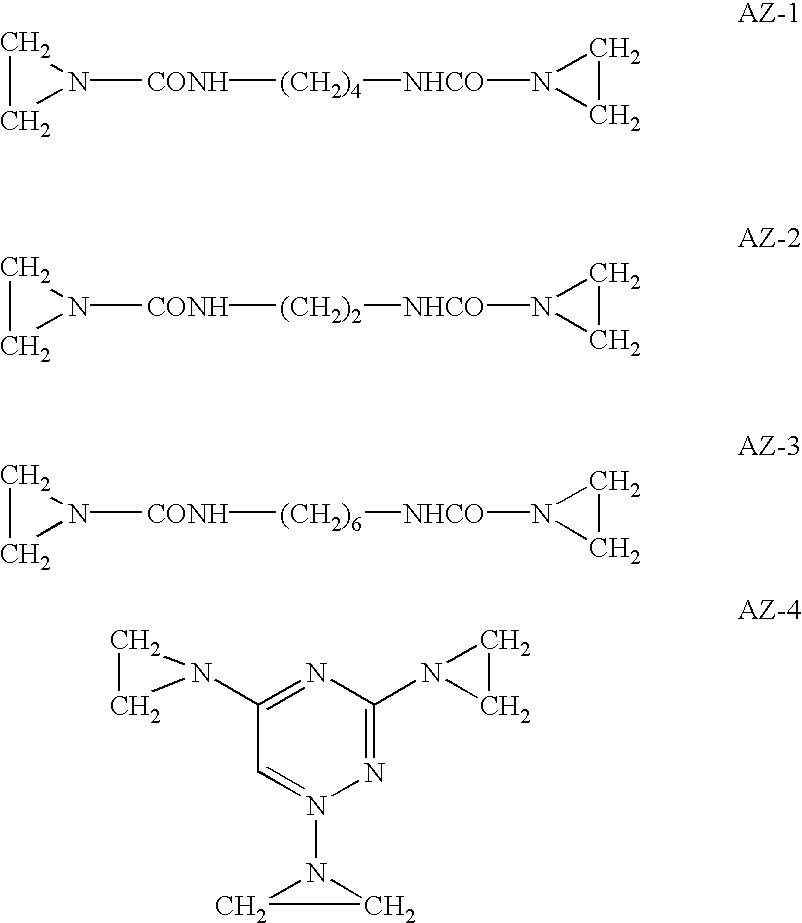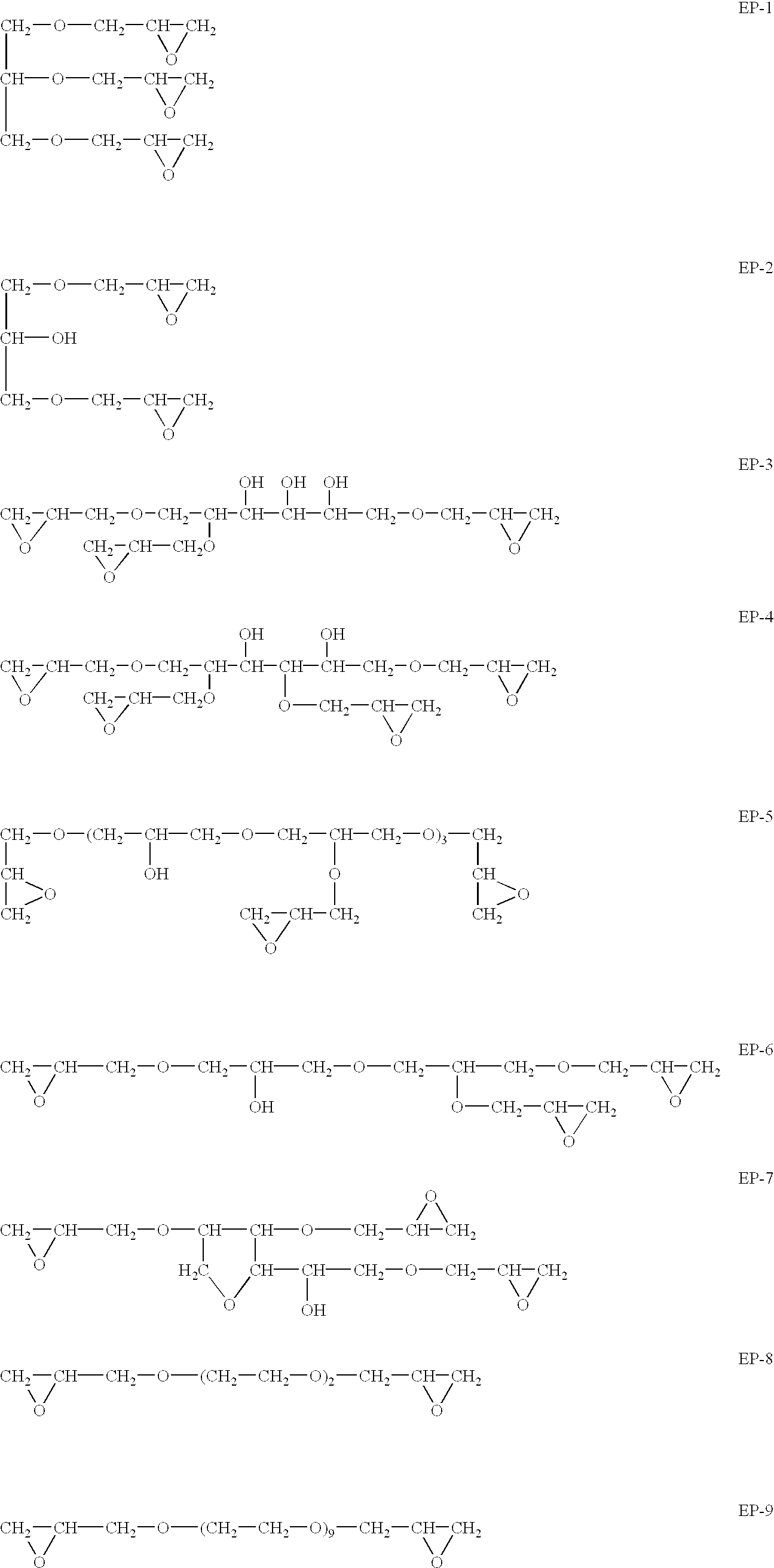Photothermographic material and image formation method
a technology of photothermographic material and image formation method, which is applied in the direction of auxillary/base layers of photosensitive materials, instruments, photosensitive materials, etc., can solve the problems of generating scratches on formed images and insufficient film strength
- Summary
- Abstract
- Description
- Claims
- Application Information
AI Technical Summary
Benefits of technology
Problems solved by technology
Method used
Image
Examples
example 1
[0153] 1) Preparation of Undercoated Supports
[0154] Preparation of Polyethylene Terephthalate Supports
[0155] Polyethylene terephthalate (henceforth abbreviated as "PET") pellets were dried at 130.degree. C. for 4 hours, melted at 300.degree. C., then extruded from a T-die and rapidly cooled to form an unstretched film. The film was stretched along the longitudinal direction by 3.0 times using rollers of different peripheral speeds, and then stretched along the transverse direction by 4.5 times using a tenter. The temperatures used for these operations were 110.degree. C. and 130.degree. C., respectively. Then, the film was subjected to thermal fixation at 240.degree. C. for20 seconds, and relaxed by 4% along the transverse direction at the same temperature. Thereafter, the film was subjected to a heat treatment by passing it through a zone at 200.degree. C. at a speed of 20 m / min over 10 minutes with a rolling up tension of 3.5 kg / cm.sup.2.
[0156] Subsequently, the chuck of the tente...
example 2
[0212] Photothermographic materials were prepared in the same manner as in Example 1 except that the silver halide was subjected to chemical sensitization. As for the method of chemical sensitization, the silver halide emulsion was warmed to 60.degree. C., added with thiourea dioxide, 2,3,4,5,6-pentafluorophenylphosphine selenide and chloroauric acid in amounts of 5.times.10.sup.-5 mole / Ag mole, 1.times.10.sup.-5 mole / Ag mole and 8.times.10.sup.-6 mole / Ag mole, respectively, ripened for 50 minutes, and then rapidly cooled to 35.degree. C. for completion of the chemical sensitization to prepare a silver halide emulsion. As a result of evaluations similar to those of Example 1, results similar to those of Example 1 were obtained. Thus, the advantages of the present invention were clearly demonstrated.
example 3
[0213] The samples used in Examples 1 and 2 were exposed and heat-developed by using an A2 size plotter, FT-286R, produced by NEC Corp., a dry film processor, FDS-6100X, produced by Fuji Photo Film Co., Ltd., and a dry system auto carrier, FDS-C1000, produced by Fuji Photo Film Co., Ltd., and similarly evaluated. As a result, results similar to those of Examples 1 and 2 were obtained. Thus, the advantages of the present invention were clearly demonstrated.
PUM
 Login to View More
Login to View More Abstract
Description
Claims
Application Information
 Login to View More
Login to View More - R&D
- Intellectual Property
- Life Sciences
- Materials
- Tech Scout
- Unparalleled Data Quality
- Higher Quality Content
- 60% Fewer Hallucinations
Browse by: Latest US Patents, China's latest patents, Technical Efficacy Thesaurus, Application Domain, Technology Topic, Popular Technical Reports.
© 2025 PatSnap. All rights reserved.Legal|Privacy policy|Modern Slavery Act Transparency Statement|Sitemap|About US| Contact US: help@patsnap.com



